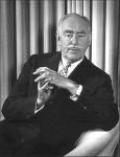Ulysses S. Grant
The Army has named ten military bases in honor of men who killed 365,000 U.S. soldiers. Should they be renamed? Or left as they are, since the bases are part of a “Great American Heritage," as President Trump says?
The Army has named ten military bases in honor of men who killed 365,000 U.S. soldiers. Should they be renamed? Or left as they are, since the bases are part of a “Great American Heritage," as President Trump says?
Ulysses S. Grant had to respond to more charges of misconduct that took the form of financial corruption than any other president.
With his command threatened by allegations of drunkenness, Ulysses S. Grant went on the attack, won two major victories, demanded “Unconditional Surrender”, and nearly split the Confederacy in half.
In one momentous decision, Robert E. Lee spared the United States years of divisive violence
An impetuous and sometimes corrupt Congress has often hamstrung the efforts of the president since the earliest days of the Republic
General Grant escapes the swamps and a War Department move to relieve him of command
The memoirs of Civil War correspondent SYLVANUS CADWALLADER were recently discovered and edited by Lincoln biographer Benjamin Thomas
The memoirs of Civil War correspondent SYLVANUS CADWALLADER were recently discovered and edited by Lincoln biographer Benjamin Thomas
Lincoln painstakingly evolved a plan for harmonious reconstruction of the Union, which Radical Republicans moved to sabotage
Lincoln painstakingly evolved a plan for harmonious reconstruction of the Union, which Radical Republicans moved to sabotage
Most of them were American soldiers who fought with skill, discipline, and high courage against a U.S. Army that numbered Ulysses Grant in its ranks. The year was 1847.
Once the South was beaten, Eastern and Western
troops of the Union army resented each other so violently that some feared for the survival of the
victorious government. Then the tension
disappeared in one happy stroke that gave the
United States its grandest pageant—and General
Sherman the proudest moment of his life.
Lee. Grant. Jackson. Sherman. Thomas. Yes, George Henry Thomas belongs in that company. The trouble is that he and Grant never really got along.
Corruption must be fought in ways that preserve fairness and freedom. Otherwise the reformers can be as bad as the rascals.
In the Republic’s direst hour, he took command. In the black days after Bull Run, he won West Virginia for the Union. He raised a magnificent army and led it forth to meet his “cautious & weak” opponent, Robert E. Lee. Why hasn’t history been kinder to George B. McClellan?
The old school is alive with the memory of men like Lee, Grant, Pershing, and Eisenhower
An old, familiar show is back in Washington. There’s a new cast, of course, but the script is pretty much the same as ever. Here’s the program.
It might seem that building a mausoleum to the great general would be a serenely melancholy task. Not at all. The bitter squabbles that surrounded the memorial set city against country and became a mirror of the forces straining turn-of-the-century America.
For this crime, she was arrested, held, indicted, and put on trial. Judge Hunt presided.
The ex-Presidency now carries perquisites and powers that would have amazed all but the last few who have held that office
HISTORICAL REGISTER of the CENTENNIAL EXPOSITION 1876.
On a new bridge that arched the flood Their toes by April freezes curled, There the embattled committee stood, Beset, it seemed, by half the world.
The simple, affectionate water colors of an unassuming Scots immigrant, David J. Kennedy, bring back the Philadelphia of 1876 and our first great world’s fair
The Union stood in danger of losing an entire army at Chattanooga. Then U. S. Grant arrived, and directed the most dramatic battle of the Civil War
Faced with war, famine, and bloody revolution, a political wheel horse turned into a first-class ambassador.





